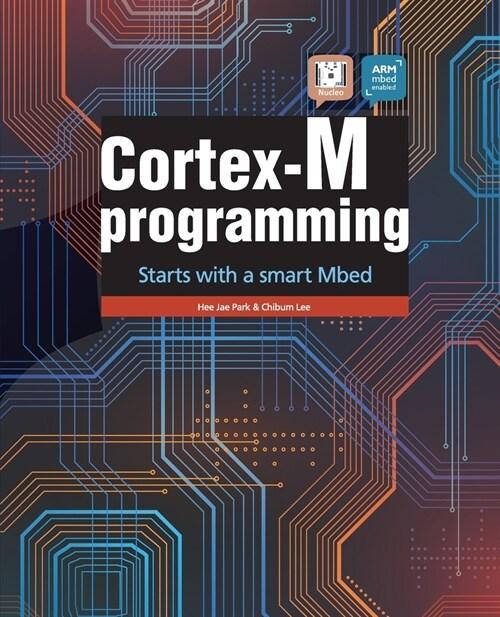책 이미지

책 정보
· 분류 : 외국도서 > 기술공학 > 기술공학 > 기계공학
· ISBN : 9781848213982
· 쪽수 : 368쪽
목차
Preface xi
Introduction xiii
Alain BOUTIER
Chapter 1. Basics on Light Scattering by Particles 1
Fabrice ONOFRI and Séverine BARBOSA
1.1. Introduction 1
1.2. A brief synopsis of electromagnetic theory 2
1.2.1. Maxwell’s equations 2
1.2.2. Harmonic electromagnetic plane waves 4
1.2.3. Optical constants 9
1.2.4. Light scattering by a single particle 11
1.3. Methods using separation of variables 16
1.3.1. Lorenz–Mie (or Mie) theory 16
1.3.2. Debye and complex angular momentum theories 26
1.4. Rayleigh theory and the discrete dipole approximation 29
1.4.1. Rayleigh theory 29
1.4.2. Discrete dipole approximation 31
1.5. The T-matrix method 32
1.6. Physical (or wave) optics models 34
1.6.1. Huygens–Fresnel integral 35
1.6.2. Fraunhofer diffraction theory for a particle with a circular cross section 37
1.6.3. Airy theory of the rainbow 40
1.6.4. Marston’s physical-optics approximation 44
1.7. Geometrical optics 47
1.7.1. Calculation of the scattering angle 48
1.7.2. Calculation of the intensity of rays 48
1.7.3. Calculation of the phase and amplitude of rays 49
1.8. Multiple scattering and Monte Carlo models 50
1.8.1. Scattering by an optically diluted particle system 50
1.8.2. Multiple scattering 51
1.8.3. Monte Carlo method 52
1.9. Conclusion 57
1.10. Bibliography 57
Chapter 2. Optical Particle Characterization 67
Fabrice ONOFRI and Séverine BARBOSA
2.1. Introduction 67
2.2. Particles in flows 69
2.2.1. Diameter, shape and concentration 69
2.2.2. Statistical representation of particle size data 70
2.2.3. Concentrations and fluxes 74
2.3. An attempt to classify OPC techniques 75
2.3.1. Physical principles and measured quantities 75
2.3.2. Nature and procedure to achieve statistics 76
2.4. Phase Doppler interferometry (or anemometry) 77
2.4.1. Principle 77
2.4.2. Modeling the phase–diameter relationship 81
2.4.3. Experimental setup and typical results 87
2.4.4. Conclusion 90
2.5. Ellipsometry 91
2.6. Forward (or “laser”) diffraction 93
2.6.1. Principle 93
2.6.2. Modeling and inversion of diffraction patterns 95
2.6.3. Typical experimental setup and results 98
2.6.4. Conclusion 100
2.7. Rainbow and near-critical-angle diffractometry techniques 101
2.7.1. Similarities to forward diffraction 101
2.7.2. Rainbow diffractometry 102
2.7.3. Near-critical-angle diffractometry 107
2.8. Classical shadowgraph imaging 112
2.8.1. Principle and classical setup 112
2.8.2. One-dimensional shadow Doppler technique 114
2.8.3. Calculation of particle images using the point spread function 115
2.8.4. Conclusion 118
2.9. Out-of-focus interferometric imaging 119
2.9.1. Principle 119
2.9.2. Modeling the diameter–angular frequency relationship 120
2.9.3. Conclusion 126
2.10. Holography of particles 128
2.10.1. Gabor holography for holographic films 128
2.10.2. Inline digital holography 129
2.10.3. Conclusion 131
2.11. Light extinction spectrometry 132
2.11.1. Principle 132
2.11.2. Algebraic inverse method 134
2.11.3. Experimental setup and conclusion 136
2.12. Photon correlation spectroscopy 139
2.13. Laser-induced fluorescence and elastic-scattering imaging ratio 141
2.13.1. Principle 142
2.13.2. Experimental setup and results 143
2.13.3. Conclusion 144
2.14. Laser-induced incandescence 144
2.15. General conclusions 145
2.16. Bibliography 146
Chapter 3. Laser-Induced Fluorescence 159
Fabrice LEMOINE and Frédéric GRISCH
3.1. Recall on energy quantification of molecules 159
3.1.1. Radiative transitions 162
3.1.2. Energy level thermo-statistics 164
3.1.3. Franck–Condon principle 164
3.1.4. Non-radiative transitions 164
3.1.5. Line width 165
3.2. Laser-induced fluorescence principles 168
3.2.1. Absorption kinetics 169
3.2.2. Fluorescence signal 170
3.2.3. Fluorescence detection 173
3.2.4. Absorption along optical path 174
3.2.5. Fluorescence measurement device 175
3.3. Applications of laser-induced fluorescence in gases 177
3.3.1. Generalities 177
3.3.2. Diatomic molecules 178
3.3.3. Poly-Atomic molecular tracers 186
3.4. Laser-induced fluorescence in liquids 202
3.4.1. Principles and modeling 202
3.4.2. Fluorescence reabsorption 205
3.4.3. Applications to concentration measurement 205
3.4.4. Application to temperature measurement 210
3.5. Bibliography 218
Chapter 4. Diode Laser Absorption Spectroscopy Techniques 223
Ajmal MOHAMED
4.1. High spectral resolution absorption spectroscopy in fluid mechanics 223
4.2. Recap on molecular absorption 226
4.2.1. Line profile 226
4.2.2. Line strength 228
4.3. Absorption spectroscopy bench 229
4.3.1. Emitting optics 230
4.3.2. Optical detection 234
4.3.3. Spectra processing 237
4.4. Applications in hypersonic 245
4.4.1. F4 characteristics 246
4.4.2. Setup installed at F4 248
4.4.3. Results obtained at F4 and HEG 249
4.5. Other applications of diode laser absorption spectroscopy 250
4.5.1. Combustion applications 250
4.5.2. Applications to atmospheric probing 253
4.6. Other devices for diode laser absorption spectroscopy 254
4.6.1. Multipass spectrometry 254
4.6.2. Spectrometry in a resonant cavity 257
4.7. Perspectives and conclusion on diode laser absorption spectroscopy 261
4.7.1. Laser source: use of non-cryogenic diodes 262
4.7.2. Spatial resolution: use of probe in flow 262
4.7.3. Use of frequency combs 264
4.8. Bibliography 264
Chapter 5. Nonlinear Optical Sources and Techniques for Optical Diagnostic 271
Michel LEFEBVRE
5.1. Introduction to nonlinear optics 271
5.2. Main processes in nonlinear optics 272
5.2.1. Propagation effects 273
5.2.2. Second- and third-order nonlinearities 276
5.2.3. Phase matching notion 280
5.3. Nonlinear sources for optical metrology 282
5.3.1. Sum frequency generation and frequency doubling 283
5.3.2. Raman converters 285
5.3.3. Optical parametric generators and oscillators 289
5.4. Nonlinear techniques for optical diagnostic 296
5.4.1. Introduction to four-wave mixing techniques 296
5.4.2. Temperature and concentration measurements in four-wave mixing 299
5.4.3. Velocity measurements in four-wave mixing 301
5.5. Bibliography 305
Chapter 6. Laser Safety 307
Jean-Michel MOST
6.1. Generalities on laser safety 307
6.2. Laser type and classification 308
6.3. Laser risks: nature and effects 310
6.3.1. Biological risks 310
6.3.2. Risks to the eye 312
6.3.3. Risks to the skin 314
6.3.4. Risk to hearing 315
6.3.5. Other biological risks 315
6.4. Protections 316
6.4.1. Accident prevention 316
6.4.2. Collective protection 316
6.4.3. Individual protection 318
6.5. Safety advice 319
6.6. Human behavior 320
Conclusion 321
Alain BOUTIER
Nomenclature 323
List of Authors 329
Index 331

















![[eBook Code] Laser Metrology in Fluid Mechanics (eBook Code, 1st)](/img_thumb/9781118576885.jpg)
![[eBook Code] Laser Metrology in Fluid Mechanics (eBook Code, 1st)](/img_thumb/9781118576953.jpg)
![[eBook Code] Laser Velocimetry in Fluid Mechanics (eBook Code, 1st)](/img_thumb/9781118569399.jpg)
![[eBook Code] Laser Velocimetry in Fluid Mechanics (eBook Code, 1st)](/img_thumb/9781118569337.jpg)
![[eBook Code] Laser Velocimetry in Fluid Mechanics (eBook Code, 1st)](/img_thumb/9781118569658.jpg)




